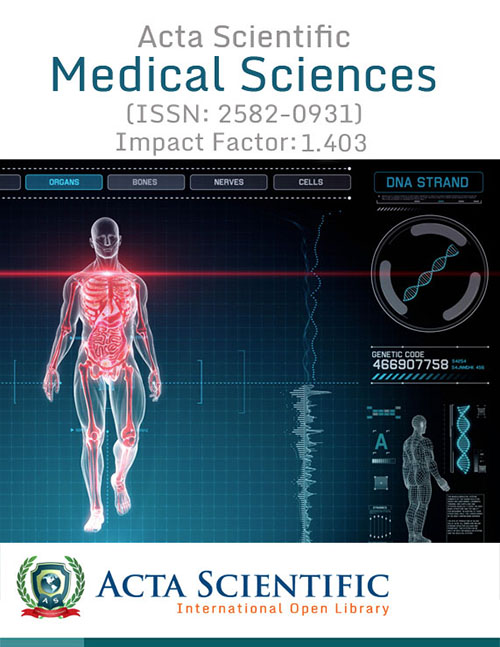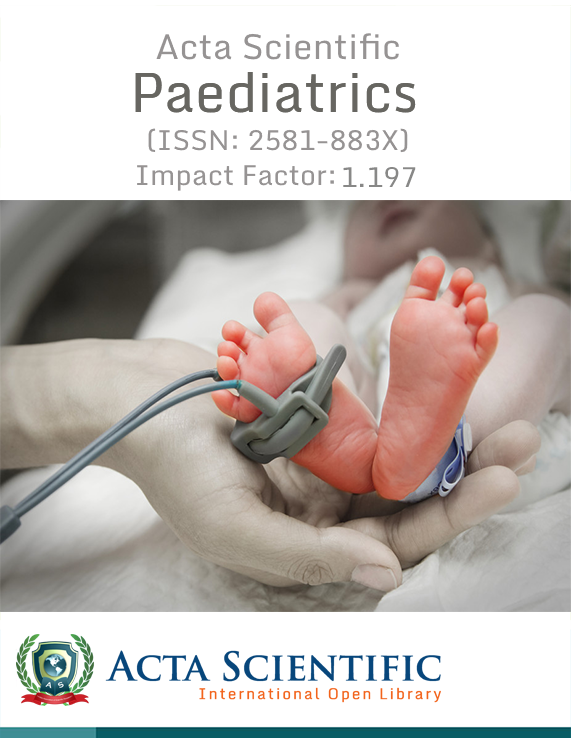Acta Scientific Ophthalmology (ASOP)
Case Report Volume 3 Issue 6
Japhet Pobanou Thera*, Pierre Dakouo , Jean Marc Lere Tiama and Ali Konipo
Institute of African Tropical Ophthalmology, Bamako, Mali
*Corresponding Author: Japhet Pobanou Thera, Institute of African Tropical Ophthalmology, Bamako, Mali.
Received: May 02, 2020; Published: May 22, 2020
Introduction: Marfan syndrome is a rare genetic disorder linked to the mutation in the FBN1 gene, which codes for fibrillin. It is transmitted in the autosomal dominant mode. Its prevalence is estimated at 1/5000 individuals. Cardiovascular, skeletal and ophthalmic disorders are the most frequent.
Clinical Observation: We report the case of a 9-year-old male child with uneventful family history brought by his parents for blurred vision. The visual acuity without correction was “count fingers at 2 meters”. Slit lamp examination showed bilateral posterior dislocation of the lens in the vitreous, the Intra-ocular pressure (IOP) was 12 mmHg in both eyes, the fundus was normal. The general examination found a tall child measuring 1.48 m of height for 26 kg. He had slender limbs showing the sign of the thumb (Steinberg) and the sign of the wrist along with a moderate pectus excavatum. Cardiac ultrasound showed dilation of the ascending aorta. According to Gant's criteria (Ghent), we concluded to the diagnosis of Marfan syndrome.
Discussion: The diagnosis of Marfan syndrome is difficult to establish. At first, it is mainly clinical with the association of major and minor signs. Genetic research is possible as well as skin biopsy.
Lens ectopia is the most common ophthalmologic manifestation in Marfan syndrome. According to Gant's criteria, we concluded to the diagnosis of Marfan syndrome.
Conclusion: Marfan syndrome is oftentimes discovered during an ophthalmic consultation. The management of its various disorders and the follow-up imply a frank collaboration between many practitioners.
Keywords: Dislocation of the Lens; Marfan; Child
References
- Dean JCS. “Marfan Syndrome : clinical, diagnosis and management’’. European Journal of Human Genetics 15 (2007): 724-333.
- Le Parc J-M. “Le syndrome de Marfan’’. Encyclopédie Orphanet (2005): 1-74.
- De Laage de Meux P., et al. “Déplacements congénitaux et acquis du cristallin’’. EMC Ophtalmologie (2005) : 21.
- Omolase CO., et al. “Bilateral Ectopia Lentis in Marfan’s Syndrome: A Case Report’’. Clinics in Surgery 3 (2018): 2244.
- Gordana S., et al. “Ocular features of Marfan syndrome’’. Medicine and Biology1 (2008): 37-40.
- Neuville M., et al. “Manifestations respiratoires du syndrome de Marfan’’. Revue des Maladies Respiratoires 2 (2015): 173-181.
- De Paepe A., et al. “Revise criteria for the Marfan syndrome’’. American Journal of Medical Genetics 4 (1996) :417-426.
- Waduthantri S. “Ocular manifestations of Marfan's syndrome’’. Medical Journal of Dr. D.Y. Patil Vidyapeeth 10 (2017): 118-119.
- Pyeritz RE., et al. “Immunohistochemical localization of fibrillin in human ocular tissues. Relevance to the Marfan Syndrome’’. Archives of ophthalmology 113 (1995): 103-109.
- Linda M., et al. “Le syndrome de Marfan’’. Cahiers de la Puéricultrice223 (2009): 37.
- Charif-chefchaouni M., et al. “Les manifestations oculaires du syndrome de Marfan : à propos de 20 cas’’. Médecine du Maghreb (2001): 87.
- Rubin SE., et al. “Ocular manifestations of autosomal dominant systemic conditions’’. Duane’s Clinical Ophthalmology 58 (2006).
- Mary J., et al. “Association of Age and Sex with Phenotype: The NHLBI GenTAC Registry’’. Circulation: Cardiovascular Genetics 13 (2007): 1647.
- Kumar A., et al. “Bilateral posterior lens dislocation in Marfan's syndrome’’. Indian Journal of Ophthalmology 37 (1989): 202-204.
- Laffargue F., et al. “Signes cliniques évocateurs d’un syndrome de Marfan chez l’enfant de moins de 10 ans’’. Archives de Pédiatrie 11 (2013): 1193-1200.
- Mema V., et al. “Ocular complications of marfan syndrome. Report of two cases’’. Hippokratia1 (2010): 45-47.
Citation
Citation: Japhet Pobanou Thera.,et al. “Lens Dislocation in a 9-Year-Old Child with Marfan Syndrome”. Acta Scientific Ophthalmology 3.6 (2020): 24-26.
Copyright
Copyright: © 2020 Japhet Pobanou Thera., et al. This is an open-access article distributed under the terms of the Creative Commons Attribution License, which permits unrestricted use, distribution, and reproduction in any medium, provided the original author and source are credited.
Journal Menu
Metrics
News and Events
- Publication Certificate
Authors will be provided with the Publication Certificate after their successful publication - Last Date for submission
Authors are requested to submit manuscripts on/before January 23, 2025, for the Second issue of 2026.


















